In the second installment of our farm income and diary crisis debate, Silvia Däberitz, managing director of the European Milk Board (EMB) tells us about how a Market Responsibility Programme could work.
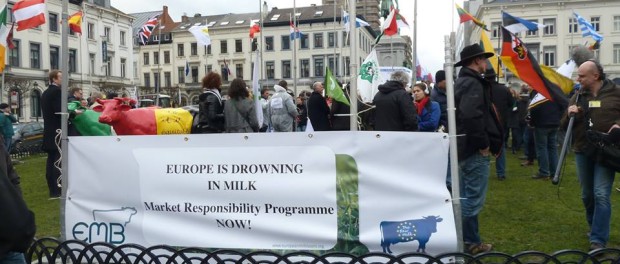
Read the opener to the ARC2020 farm income and milk crisis debate
With over 150 million tons of annual cow’s milk production, the EU is a major player in the dairy sector with a big internal and external impact. At present, though, the EU faces a major challenge. Massive overproduction has pushed the dairy sector into a serious crisis, forcing many producers throughout Europe onto the streets to protest. The crisis can be overcome if the EU politicians put in place a crisis instrument that addresses the production volume.
There are two cogent reasons for applying such an instrument:
- The EU internal economy would be stabilised, with fair farm-gate prices throughout the EU keeping milk production centres alive. The jobs in the dairy sector and in related sectors thus secured would prevent rural regions bleeding to death. At the same time, growth in milk production would not be blocked. If there is enough demand, milk production can be increased.
- Curbing overproduction in the EU will help not to affect growth in non-EU countries. Producers in developing nations will be able to sell their products and earn an income. This will reduce poverty and hunger – reasons for emigration.
The interconnections in the EU market and the EU policy have a great influence on the dairy sector in every member state. That is why in this respect the EU situation should be viewed as a whole.
2003: turning point in EU milk policy
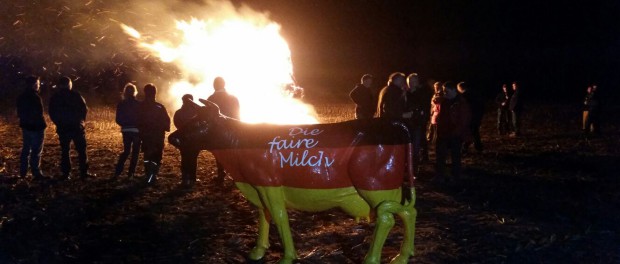
EU milk policy took a turn in 2003 when deregulation of the milk market started. Since the end of the milk quota system on 31 March 2015, the dairy market has faced an even bigger challenge, because the successor system lacks effective instruments for preventing a damaging surplus of production. Already in 2014 higher prices and expectations of a quota-free market triggered a 4.3% production increase in the EU. Additional volume increases of 10% in New Zealand and 2.4% in the US together with EU production have resulted in a production surplus on the world market of over 11 million tons of milk.
It is obvious that so far the ability to produce milk has not been an issue for the EU. The problem lies elsewhere: the challenge actually consists in not producing too much milk. The market is saturated and the additional volume is putting immense pressure on farm-gate prices. That is also becoming clear in 2015, with an additional production volume of 2.8% in the EU between April and July compared to the same period in 2014 (see Milk Market Observatory 2015). Prices have dropped dramatically and cannot cover production costs, as shown by studies from individual countries.
Therefore a reasonable reaction from the EU would be to recognise market signals and slow down production throughout the EU. That requires an adequate framework implemented by EU policymakers. Only then is an EU-wide reaction possible. Whatever it is that reduces demand for EU dairy products, a European policy should be able to react to it, while focusing on the factor that it can influence: the supply of milk. That remains the biggest challenge for EU policy and the dairy sector, because so far the current political strategy has tended to stimulate production instead of slowing it down.
But there are crisis concepts targeting the damaging overproduction in the EU such as the Market Responsibility Programme (MRP).
How the crisis instrument works
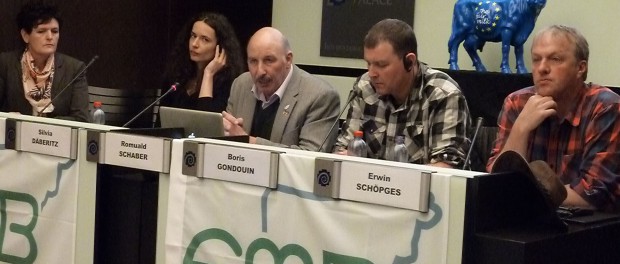
The MRP works on the basis of a market index showing the imbalance between production costs and farm-gate prices. At the value of 100 the market is stable. A number below that limit signals discrepancies. If the discrepancies are significant, the MRP kicks in. It reacts to minor market discrepancies with gentler measures, such as opening up private storage – i.e. the temporary storage of dairy products thus withdrawn from the market – or incentive programmes for extra consumption such as sucking-calf production. If the index slides further, the second stage of the MRP is triggered off with a voluntary restraint on supply. The total volume necessary to restore balance to the milk market is calculated on an EU level. Dairy farmers are asked, by means of an invitation to tender geared to the total volume calculated, to cut their production volume voluntarily by a few per cent. Any dairy farmer taking up the invitation receives financial compensation for every kilo of milk s/he does not produce. In many cases these first two stages can already help restore balance to the market. Should there be very severe market distortions, however, a third stage is available. If the index falls by more than 25 per cent, there is an option of cutting the production volume for each producer across the EU by 2 to 3 per cent during a defined timeframe.
Fears that this instrument would restrict the development of a dairy farm are unfounded. Of course, in stage 3 discipline will be required of each and every producer for a brief period to return farm-gate prices to a reasonable level. Yet this stable price ensures that dairy farms will no longer have to sell their milk at prices below their production costs. This enables them to generate an income as well as have financial resources to invest in the farm’s future. The rock-bottom prices that are the feature of the current milk market barely provide a livelihood, let alone create a profit. The reliability of fair prices, however, gives the producers planning security and enables them to step up production in line with demand. Moreover, the 3rd stage referred to, entailing an obligatory reduction in production for a short period, will only be necessary in a very few cases. Before that, both the first stage measures and the voluntary restraint on supply will ease the market. What is more, the MRP is applied only in times of crisis. At all other times the market operates without any supply management.
Stabilising its dairy sector by means of sensible instruments and thus maintaining production and jobs is not only a possibility for the EU, it is also its duty. As EU milk policy has a big external influence, the EU also bears responsibility for the development of other countries. The problem is EU overproduction in the dairy sector, because it washes up on the developing countries’ markets as milk powder, say, damaging milk production there. This limits the scope for local farmers to generate an income; economic growth is stunted. It is in this sense that the current export drive by EU dairies has severe negative consequences for local milk producers in West African countries, for instance.
Call for a European solution and financial compensation for producers
A common European solution for dairy farmers is lacking. EMB President Romuald Schaber: “We in the European Milk Board are for a voluntary restraint on supply compensating less production with 30 cents a kilo from EU funds.” With such backing the measure could function on a voluntary basis and would have a swift impact. The financing was not a problem, because if the intention was to cut the volume of milk by 3%, as calculated by the EU Commission, the funds required would equate roughly to the total of the super-levy in the last two years of the quota system.
Silvia Däberitz, managing director EMB



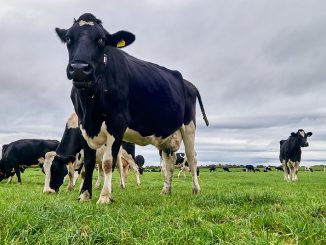
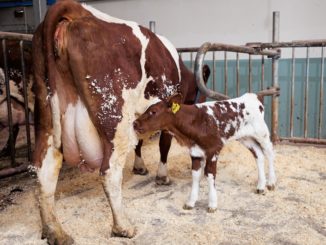
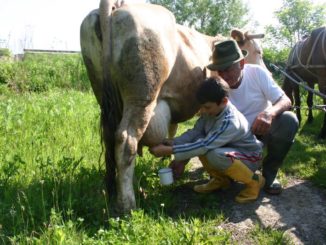
1 Trackback / Pingback
Comments are closed.